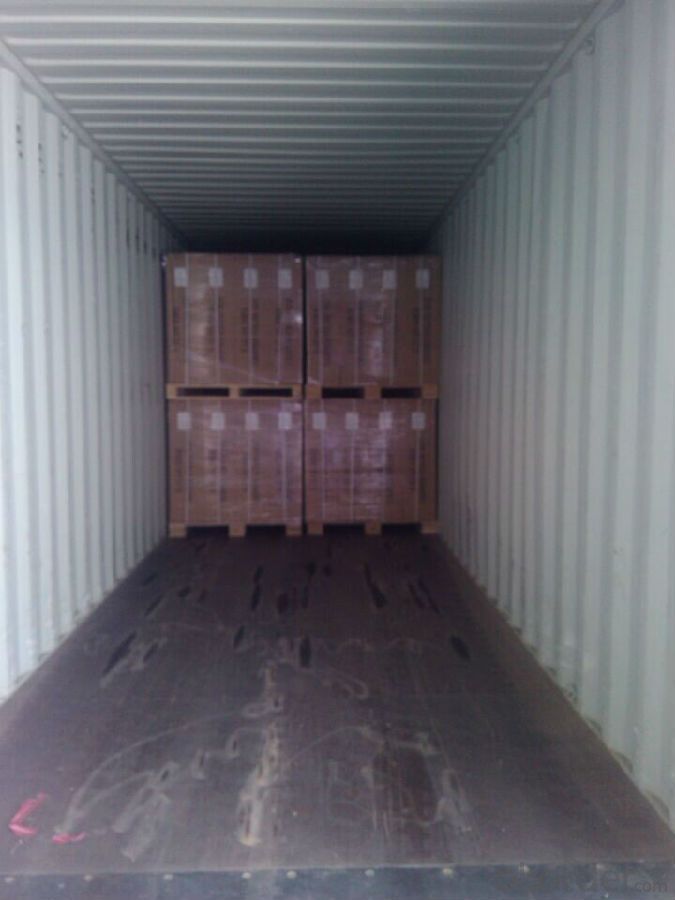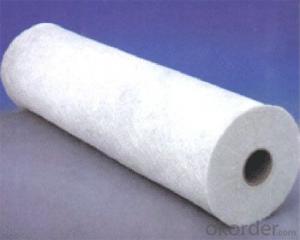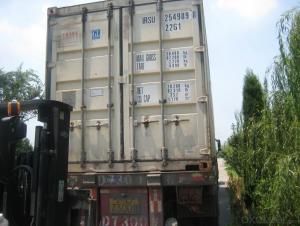E Glass Fiber Stitched Fabrics
- Loading Port:
- China Main Port
- Payment Terms:
- TT or LC
- Min Order Qty:
- 10000 kg
- Supply Capability:
- 200000Kg Per Month kg/month
OKorder Service Pledge
OKorder Financial Service
You Might Also Like
Product Description
1. Including Knitted mat,Stitched multi-axial fabric,Stitched combination fabrics.
2. Compatible with unsaturated polyester,vinyl resin and epoxy resin.
3. Applicable for pultrusion, hand lay-up and RTM processes.
1. Consistent thickness and excellent surface treatment.
2.Superior anisotropy and isotropy characteritics.
3.Rapid impregnating and good compatibility with resin.
4. Uniform tension,high dimensional stability and making handing easy.
5.Good mechanical properties and high strength of parts.
Technical Data Sheet
Item | Over Density | Moisture Content | Chop Density | Polyester Yarn | Width |
(g/m2) | (%) | (g/m2) | (g/m2) | (mm) | |
EMK300 | 309.5 | ≤0.15 | 300 | 9.5 | 50-3300 |
EMK380 | 399 | 380 | 19 | ||
EMK450 | 459.5 | 450 | 9.5 | ||
EMK450 | 469 | 450 | 19 | ||
EMC0020 | 620.9 | 601.9 | 19 | ||
EMC0030 | 909.5 | 900 | 9.5 |
FAQ
Packaging&Storage
Eech roll is packed by polyester bag,and then put into a cardboard box or plastic wowen bag.The weight of each roll is between 20 to 85 Kg, The rolls are to be horizontally placed and could be in bulk or on pallet.Optimum storage conditions are between the temperature of 5~35℃ and with the humidity between 35%~65%.The product should be used within 12 months from the time of delivery and remain in theiroriginal packaging until just prior to use.

- Q:Are fiberglass fabrics suitable for use in aerospace applications?
- Yes, fiberglass fabrics are suitable for use in aerospace applications. Fiberglass is a lightweight and high-strength material, which makes it ideal for aerospace applications where weight reduction is crucial. It has excellent mechanical properties, including high tensile strength, stiffness, and resistance to temperature variations, which are important for withstanding the extreme conditions experienced in aerospace environments. Fiberglass fabrics also have good electrical insulation properties, making them suitable for applications where protection against electromagnetic interference is necessary. Additionally, fiberglass fabrics can be engineered to be fire-resistant, further enhancing their suitability for aerospace applications. Overall, the combination of lightweight, high strength, temperature resistance, electrical insulation, and fire resistance makes fiberglass fabrics a reliable and suitable choice for use in aerospace applications.
- Q:What is the typical lifespan of fiberglass fabrics?
- The typical lifespan of fiberglass fabrics can vary depending on several factors such as the quality of the fabric, the environment it is used in, and the level of maintenance and care provided. Generally, fiberglass fabrics are known for their durability and longevity, and they can last anywhere from 10 to 30 years or even longer with proper care. Fiberglass fabrics are commonly used in applications such as insulation, construction, and the manufacturing of boats, automobiles, and aircraft. In these industries, the fabrics are often exposed to harsh conditions, extreme temperatures, and chemical exposure. Despite these challenges, fiberglass fabrics can maintain their structural integrity and performance for a significant amount of time. However, it is important to note that certain factors can affect the lifespan of fiberglass fabrics. Over time, exposure to UV radiation can cause the fabric to degrade and lose its strength. Additionally, improper handling, excessive abrasion, and lack of maintenance can also shorten the lifespan of fiberglass fabrics. To maximize the lifespan of fiberglass fabrics, regular inspections, cleaning, and maintenance are recommended. This includes keeping the fabric clean, avoiding excessive abrasion or impact, and promptly repairing any damages or tears. Additionally, applying protective coatings or treatments can provide an extra layer of protection against UV radiation and chemical exposure. In conclusion, the typical lifespan of fiberglass fabrics can range from 10 to 30 years or longer, depending on various factors. With proper care and maintenance, fiberglass fabrics can offer durability and performance for a significant amount of time, making them a reliable choice for various industrial and commercial applications.
- Q:What is the difference between woven and non-woven fiberglass fabric?
- Woven and non-woven fiberglass fabrics share a common origin in fiberglass fibers, yet they vary in terms of their construction and characteristics. Woven fiberglass fabric is produced by interlacing individual fiberglass strands in a crosshatch pattern to create a resilient and robust fabric. This weaving process yields a fabric with a consistent and uniform appearance akin to conventional textiles. Woven fiberglass fabrics are recognized for their durability, pliability, and exceptional dimensional stability. They are commonly employed in applications that necessitate high tensile strength, such as reinforcing materials for composite structures, boat construction, the aerospace industry, and automotive components. Conversely, non-woven fiberglass fabric is fashioned by fusing or matting the fiberglass fibers together using diverse techniques, such as needle punching or chemical bonding. Unlike woven fabrics, non-woven fiberglass fabrics lack a regular weave pattern and may exhibit a more arbitrary fiber orientation. This construction method confers distinct properties upon non-woven fiberglass fabrics, including high absorbency, thermal insulation, and filtration capabilities. Due to their structure, non-woven fiberglass fabrics are frequently utilized in insulation materials, filtration media, soundproofing, and as roofing material reinforcement. In essence, the primary distinction between woven and non-woven fiberglass fabrics resides in their construction and resultant properties. Woven fabrics provide strength, stability, and flexibility, rendering them suitable for structural applications, whereas non-woven fabrics deliver absorbency, insulation, and filtration properties, making them ideal for applications that necessitate these specific characteristics.
- Q:Glass fiber cloth and glass fiber?
- As reinforcing materials, glass fibers have the following characteristics, which make fiberglass far more widely used than other kinds of fibers and develop far ahead of their characteristics:(1) high tensile strength and small elongation (3%).(2) high elasticity and good rigidity.(3) the elongation within the elastic limit is large and the tensile strength is high, so the impact energy is large.(4) for inorganic fiber, with non flammable, chemical resistance.(5) water absorption is small.(6) the scale stability and heat resistance are excellent.(7) good processability, can be used as stock, bundle, felt, weaving and other forms of products.(8) transparent and permeable to light(9) the development of surface treatment agents with good resin properties.(10) the price is cheap.
- Q:How is fiberglass fabric used in the production of insulation sleeves?
- Fiberglass fabric is used in the production of insulation sleeves due to its excellent thermal properties and durability. Insulation sleeves are designed to provide thermal insulation and protection for various applications, such as industrial pipes, wires, and cables. When manufacturing insulation sleeves, fiberglass fabric is typically used as the outer layer due to its high resistance to heat and fire. The fabric acts as a barrier, preventing heat transfer and minimizing the risk of fire hazards. This is particularly important in industrial settings where high temperatures are present, as it helps to maintain a safe working environment. Additionally, fiberglass fabric is known for its insulation capabilities. It has a low thermal conductivity, meaning it is a poor conductor of heat. This property allows the fabric to effectively trap heat within the insulation sleeve, preventing energy loss and reducing the need for excessive heating or cooling. Furthermore, fiberglass fabric is highly durable and can withstand harsh environmental conditions, chemicals, and UV radiation. This makes it suitable for insulation sleeves that are exposed to outdoor elements or corrosive substances. The fabric also has good tensile strength, allowing it to withstand mechanical stress and maintain its shape over time. In summary, the use of fiberglass fabric in the production of insulation sleeves is essential for providing thermal insulation, fire protection, and durability. Its excellent thermal properties, resistance to heat and fire, and ability to withstand harsh conditions make it an ideal material for insulating various applications in industries such as construction, automotive, and manufacturing.
- Q:Is fiberglass fabric suitable for use in architectural membranes?
- Yes, fiberglass fabric is suitable for use in architectural membranes. It offers several advantages such as high strength, durability, and fire resistance. Additionally, fiberglass fabric can be lightweight and flexible, making it ideal for creating unique and innovative architectural designs.
- Q:Do fiberglass fabrics require any special care or maintenance?
- Yes, fiberglass fabrics do require special care and maintenance. It is important to avoid harsh chemicals, excessive heat, and abrasive cleaning techniques when cleaning fiberglass fabrics. Regular vacuuming or dusting, spot cleaning with mild soap and water, and avoiding direct sunlight exposure can help prolong the lifespan and appearance of fiberglass fabrics.
- Q:How is fiberglass fabric used in the production of aerospace components?
- Due to its unique properties and advantages, fiberglass fabric finds extensive use in the production of aerospace components. This fabric is created by weaving fine glass fibers together, resulting in a material that is both strong and flexible. One of the main applications of fiberglass fabric in aerospace production is reinforcing composite materials. These composite materials consist of a mixture of fiberglass fabric and a resin matrix, such as epoxy. The fabric is saturated with the resin, forming a lightweight yet incredibly sturdy and durable composite structure. This composite material is then utilized in the manufacturing of various aerospace components, including aircraft wings, fuselages, and structural panels. The utilization of fiberglass fabric in composites offers numerous benefits. Firstly, it provides an excellent strength-to-weight ratio, allowing the aerospace components to be lighter without compromising their structural integrity. This weight reduction enhances fuel efficiency, increases payload capacity, and improves overall performance. Additionally, fiberglass fabric offers high tensile strength, stiffness, and corrosion resistance, which are essential properties for aerospace applications. Another application of fiberglass fabric in aerospace production is for thermal insulation. The fabric is often coated with heat-resistant materials, like silicone or aluminum, to create insulation blankets. These blankets are utilized to safeguard critical components, such as fuel tanks, pipes, and engine compartments, from extreme temperatures. Fiberglass fabric's inherent properties of heat resistance, low thermal conductivity, and fire resistance make it an ideal material for such applications. Moreover, fiberglass fabric is also utilized as an electrical insulator in aerospace components. It is commonly employed in the construction of circuit boards, electrical cables, and insulating sleeves. Its non-conductive nature and high dielectric strength aid in preventing electrical leakage and ensure the safe and reliable operation of aerospace systems. In conclusion, fiberglass fabric plays a crucial role in the production of aerospace components. It is used for reinforcing composite materials, providing thermal insulation, and acting as an electrical insulator. Its lightweight nature, high strength, corrosion resistance, and thermal insulation properties make it an indispensable material for the aerospace industry, contributing to the advancement of aviation technology.
- Q:How does fiberglass fabric perform in terms of tensile strength?
- Fiberglass fabric exhibits high tensile strength, making it a durable material capable of withstanding significant pulling forces without breaking or deforming.
- Q:Is fiberglass fabric suitable for use in aerospace interiors?
- Yes, fiberglass fabric is suitable for use in aerospace interiors. Fiberglass fabric is known for its excellent strength-to-weight ratio and fire resistance, making it an ideal material for various applications in the aerospace industry. It is commonly used in the construction of aircraft interiors, including walls, ceilings, seats, and insulation. One of the primary reasons fiberglass fabric is preferred in aerospace interiors is its high strength. It offers exceptional durability and can withstand the rigorous conditions and vibrations experienced during flights. Additionally, its lightweight nature helps reduce the overall weight of the aircraft, resulting in improved fuel efficiency. Moreover, fiberglass fabric is inherently fire-resistant, which is crucial for ensuring the safety of passengers and crew members. In the event of a fire, fiberglass fabric will not ignite or contribute to the spread of flames, providing valuable time for evacuation and minimizing the risk of a catastrophic incident. Furthermore, fiberglass fabric is highly versatile and can be easily molded and shaped to fit the specific design requirements of aerospace interiors. It can be used as a structural material, providing stiffness and support, or as a decorative element, enhancing the aesthetic appeal of the cabin. In summary, fiberglass fabric offers numerous advantages that make it suitable for use in aerospace interiors. Its strength, lightweight nature, fire resistance, and versatility make it an excellent choice for ensuring the safety, durability, and functionality of aircraft cabins.
1. Manufacturer Overview |
|
|---|---|
| Location | |
| Year Established | |
| Annual Output Value | |
| Main Markets | |
| Company Certifications | |
2. Manufacturer Certificates |
|
|---|---|
| a) Certification Name | |
| Range | |
| Reference | |
| Validity Period | |
3. Manufacturer Capability |
|
|---|---|
| a)Trade Capacity | |
| Nearest Port | |
| Export Percentage | |
| No.of Employees in Trade Department | |
| Language Spoken: | |
| b)Factory Information | |
| Factory Size: | |
| No. of Production Lines | |
| Contract Manufacturing | |
| Product Price Range | |
Send your message to us
E Glass Fiber Stitched Fabrics
- Loading Port:
- China Main Port
- Payment Terms:
- TT or LC
- Min Order Qty:
- 10000 kg
- Supply Capability:
- 200000Kg Per Month kg/month
OKorder Service Pledge
OKorder Financial Service
Similar products
New products
Hot products
Related keywords





























